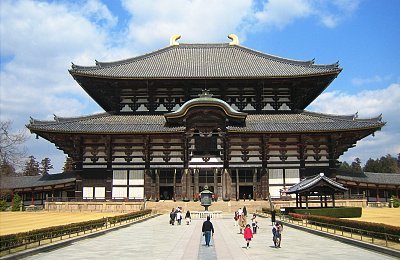
Todaiji ("Great Eastern Temple") is one of Japan's most famous and historically significant temples and a landmark of Nara.
Todaiji was constructed in 752 as the head temple of all provincial Buddhist temples of Japan and grew so powerful that the capital was moved from Nara to Nagaoka in 784 in order to lower the temple's influence on government affairs.
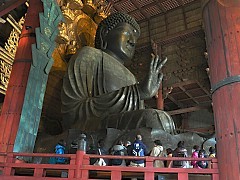 | 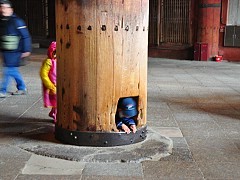 |
Not only is Todaiji housing Japan's largest bronze Buddha statue (Daibutsu), but it is also the world's largest wooden building, even though the present reconstruction of 1692 is only two thirds of the original temple's size.
A popular attraction of Todaiji is a pillar inside the temple which has a hole in its base the same size as the Daibutsu's nostril. It is said that those who can squeeze through this opening will be granted enlightenment in their next reincarnation.
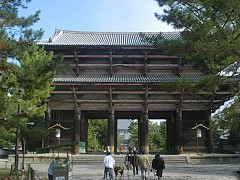 | 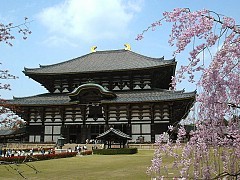 |
Along the approach to Todaiji stands Nandaimon gate, a huge wooden gate watched over by two fierce looking statues. Representing the Nio Guardian Kings, the statues are designated national treasures together with Nandaimon gate.
Todaiji's grounds cover most of northern Nara Park and include a number of smaller buildings in the hills to the east of the main hall. These include Hokkedo (also known as Sangatsudo) and Nigatsudo. The Nigatsudo hall offers nice views of the city from its balcony, and is the site of the spectacular Omizutori ceremonies, which are held annually March 1 through 14.
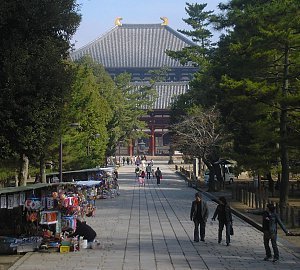




No comments:
Post a Comment